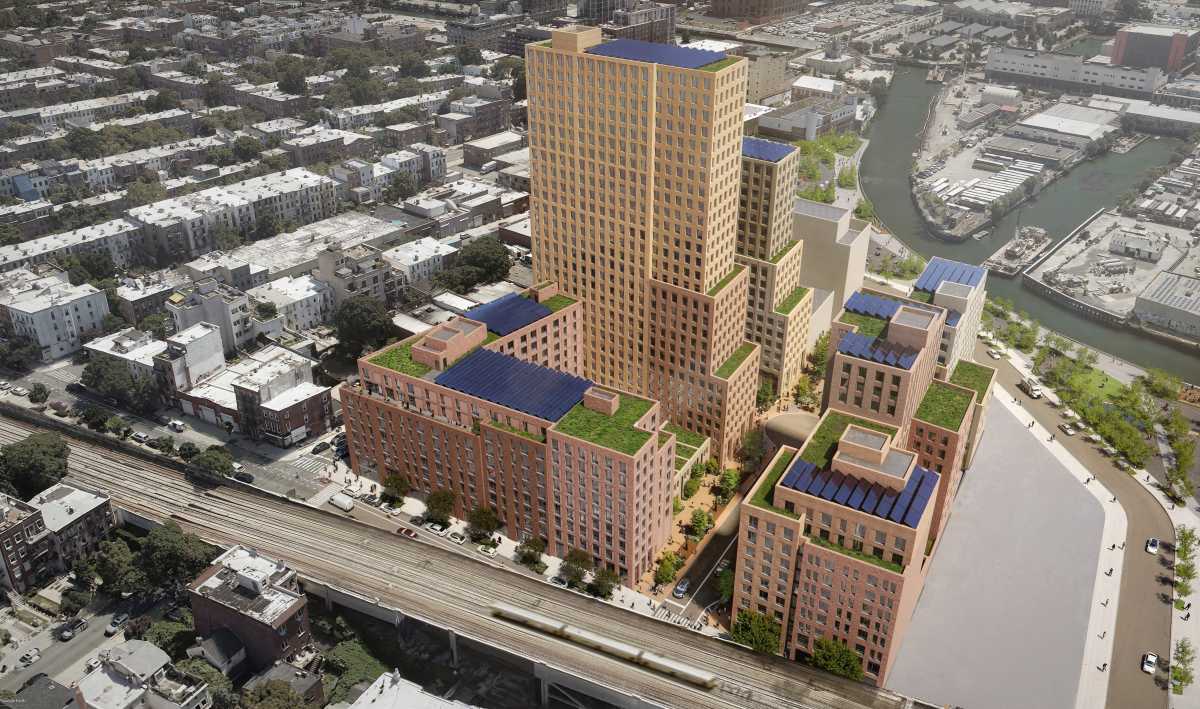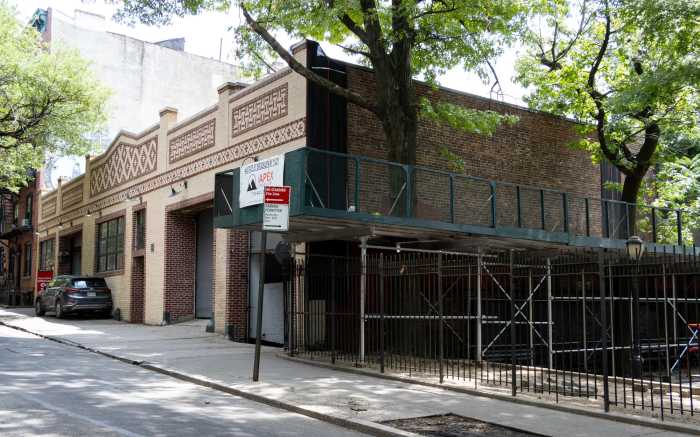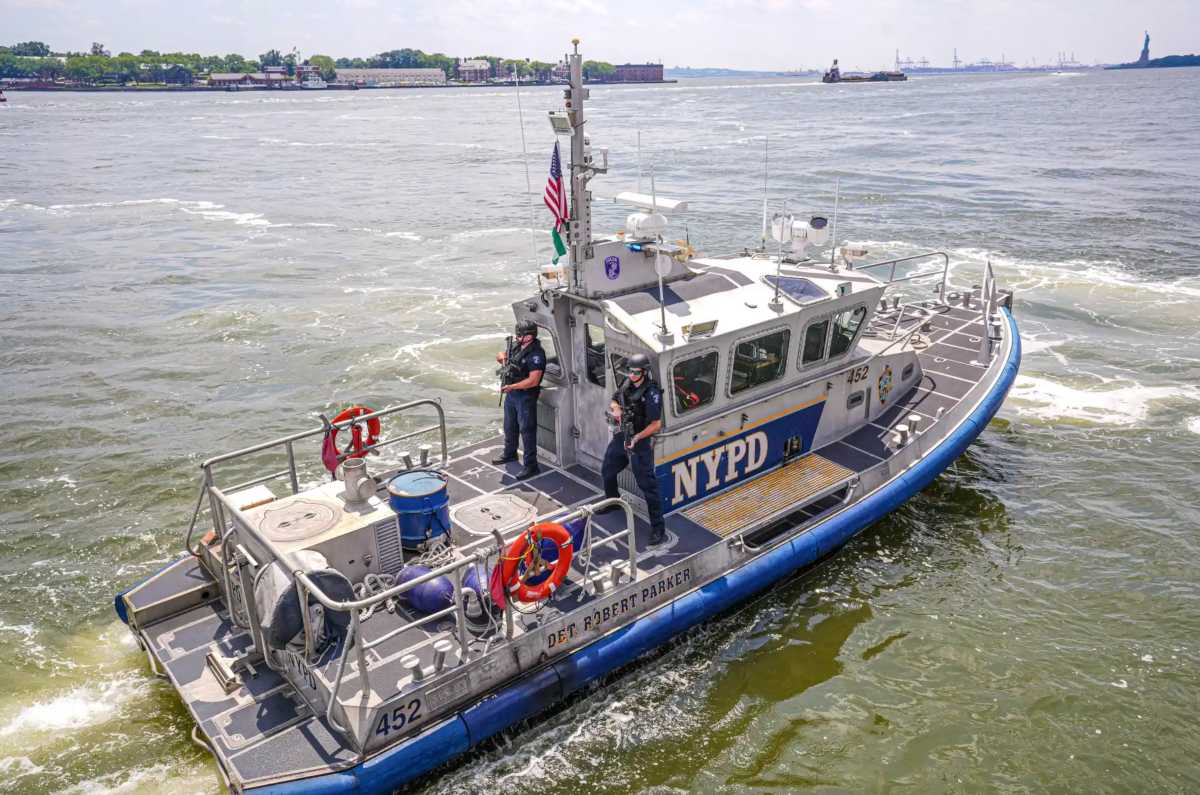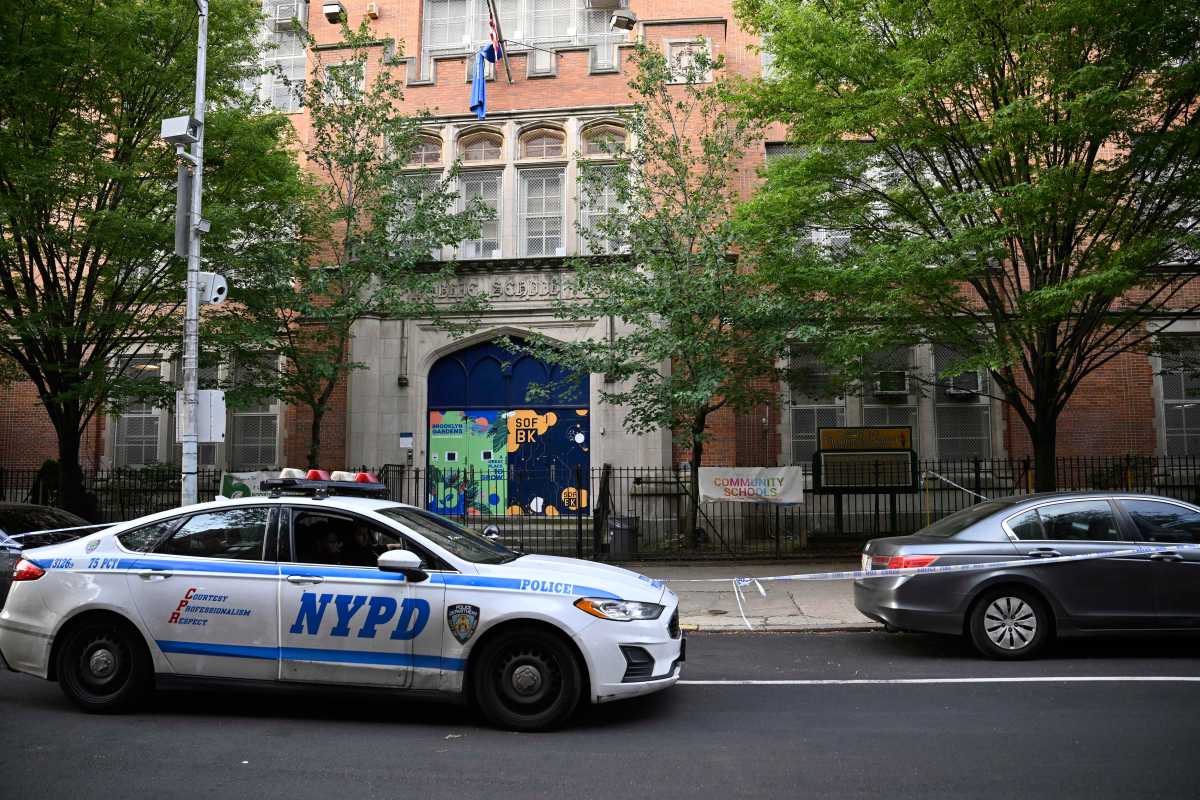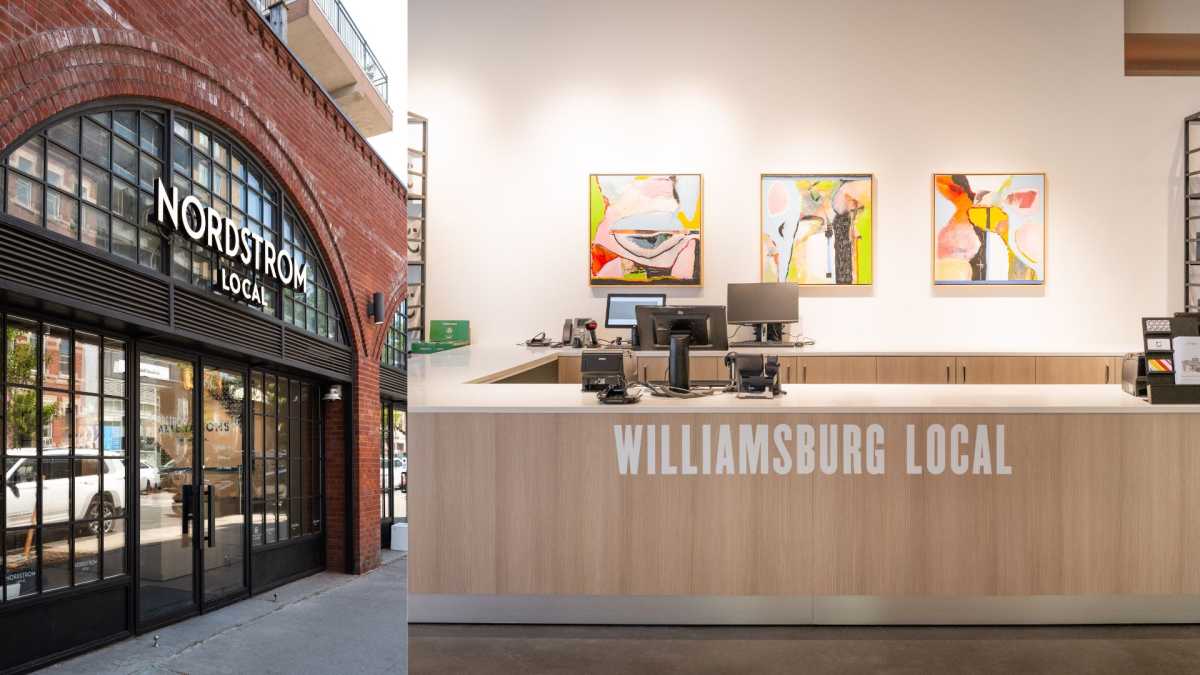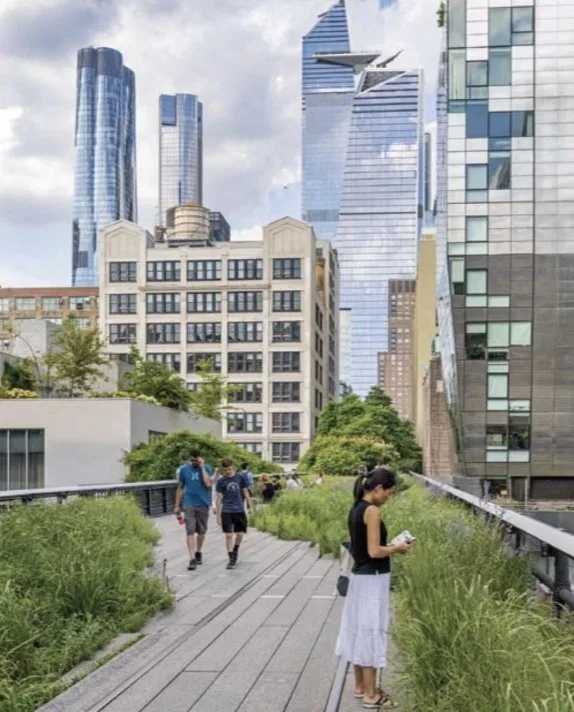The ongoing environmental clean-up at Public Place — one of the most contaminated sites in Gowanus and the future home of the massive Gowanus Green development — has ground to a halt, threatening to delay construction of hundreds of affordable apartments.
As per the 2021 Gowanus Rezoning agreement, Public Place is the future home of 950 affordable apartments, a new public school, and a waterfront park. But none of those projects can break ground until remediation is finished.
The site is polluted with a century’s worth of carcinogenic coal tar, a byproduct of gas production, from the Citizen’s Manufactured Gas Plant, which closed in the 1960s. Cleanup started in 2019 under the state’s Brownfield program.
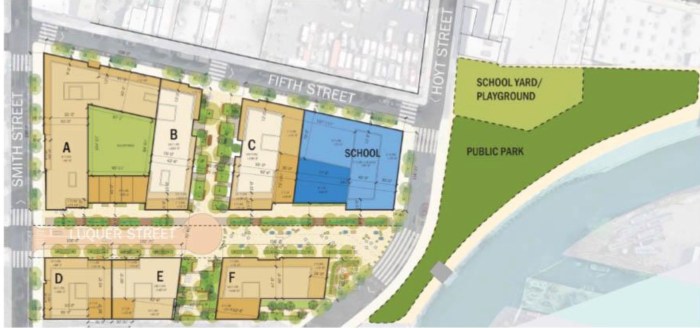
But the work stopped in February, when National Grid — the primary party responsible for cleaning up Public Place — butted heads with the state’s Department of Environmental Conservation over new guidelines handed down by the federal Environmental Protection Agency last summer.
At that point, the original remediation plan was largely finished — thousands of tons of contaminated soil had been excavated and replaced with clean fill, a new steel bulkhead had been built along the shoreline, and coal tar collection wells had been installed.
Feds set new cleanup standards
But the EPA’s new guidelines — agreed upon by DEC — were focused on containing contaminated groundwater.
Deep below the surface, the water doesn’t pose much threat to human health, but could drain into the Gowanus Canal, re-polluting it after the yearslong, $1.5 billion Superfund scrub, explained DEC deputy commissioner Patrick Foster at a March 28 meeting of the Gowanus Oversight Task Force.
The federal Superfund cleanup only extends to the banks of the Canal – not to the land on either side. But there are 43 Brownfield and state Superfund sites along the length of the 1.8-mile body, and EPA spokesperson Elias Rodriguez told Brooklyn Paper the DEC and EPA have “mutual goals” in cleaning up those properties.
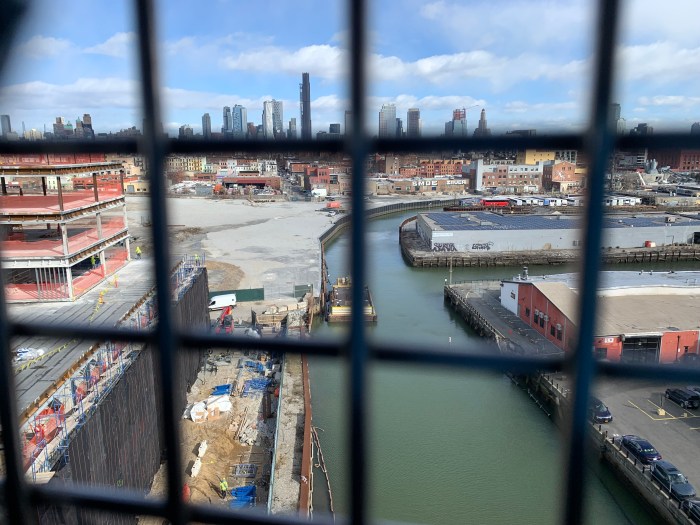
The new groundwater guidelines were created to “make sure that DEC’s decision-making is consistent with EPA’s expectations for protecting the canal,” Rodriguez added.
“New York State has a proven track record of successfully investigating and cleaning up many contaminated sites across New York City, including former industrial sites along the Gowanus Canal, as part of DEC’s ongoing mission to protect public health and the environment,” said DEC representative John J. Salka, in an email.
The DEC determined that the initial plans for Public Place would not address the EPA’s guidelines regarding groundwater – and last fall, at the agency’s request, National Grid developed a new supplemental remediation plan. In January, after consulting with the EPA, DEC said the plan was “not enough,” Foster said. DEC had asked for measures to remove, contain, or treat contaminated groundwater, and wasn’t satisfied with the company’s proposed solutions.
But National Grid disagreed — and, as it has a right to do under its Brownfield Cleanup Agreement with the state, started the dispute resolution process.
“That effectively stops work on the remedy,” until an agreement can be reached, Foster said.
National Grid spokesperson Karen Young said the initial remedy was developed with and approved by DEC, the EPA, and the state Department of Health, and that DEC had “repeatedly” confirmed it was “protective of human health and the environment.”
“After years of working cooperatively with the DEC and others to complete this remedy … it is unclear why the NYSDEC has suddenly changed its position,” Young said in an email. “The agency has not provided new evidence or information that would dictate a change to the remedy implemented at Citizens.”
National Grid has an “obligation” to evaluate DEC’s decisions and the impact they might have on the company’s millions of customers, Young said, especially since the cleanup at Public Place has already cost tens of millions of dollars.
She added that testing has shown steady levels of contaminants in the groundwater at Public Place, and that groundwater is not used on the site. At the March 28 meeting, Foster emphasized the importance of protecting groundwater even though it is not used for drinking in New York City.

The EPA has previously expressed fears that contaminated groundwater could migrate from Public Place into the canal and the soil at neighboring sites.
At last month’s meeting, Steve Marcus, a member of the Gowanus Canal Community Advisory Group, said the CAG has recently been made aware of test results showing chemicals moving off-site, near church and school buildings.
“Our goal in this dispute resolution process is to understand the reasoning behind this change and find a way to address the NYSDEC’s concerns,” Young said.
An initial decision is likely to be reached by June, Foster said at the March 28 meeting. But if one party isn’t happy with it, they can appeal — essentially starting the process over again. A DEC spokesperson said that any of the other parties involved in the cleanup — the developers of the site — could move to implement a supplemental cleanup program, but have not submitted plans to the agency.
Delays at Gowanus Green
When asked by an audience member if the process would affect the development timeline for Gowanus Green, Foster simply replied, “Yeah, it does.”
Young agreed, writing in an email, “This is especially important because drawing out the remediation process is delaying the construction of more than 950 units of much-needed affordable housing at this site.”
It was not immediately clear how much development will be impacted. Of the three agencies that presented at the March 28 Gowanus Task Force Oversight meeting, only one — the Parks Department – provided a tentative timeline for its project.
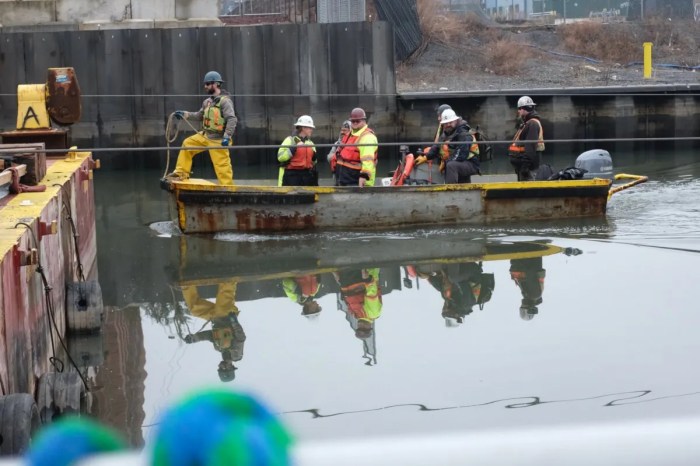
Elizabeth Ernish, a project administrator for parks, said design for the 1.5 acre, $14.4 million park is set to begin in 2025, with construction slated to start in 2027.
“I’m really happy to announce that I think we’re going to meet that target,” Ernish said at the meeting.
A Parks Department spokesperson confirmed that the city is hoping to start design next year, but that the project start is dependent on the Superfund clean-up.
“We are hopeful the additional remediation activities will not impact the start of design,” the spox said.
The Department of Housing Preservation and Development did not provide Brooklyn Paper with information about development timeline or delays. The housing at Gowanus Green will be constructed in phases, and each of the six new buildings will be funded differently, with different financial closing dates.
At the Gowanus Task Force Oversight meeting, HPD Deputy Director of Brooklyn Planning Hallah Saleh said the closing for the first, Building A, is set for the end of this year.
Building A — which will include 191 affordable units from between 80-120% of Area Median Income — received a grant from the Empire State Development Fund, which “does tie us to a certain timeline to start construction,” Saleh said.
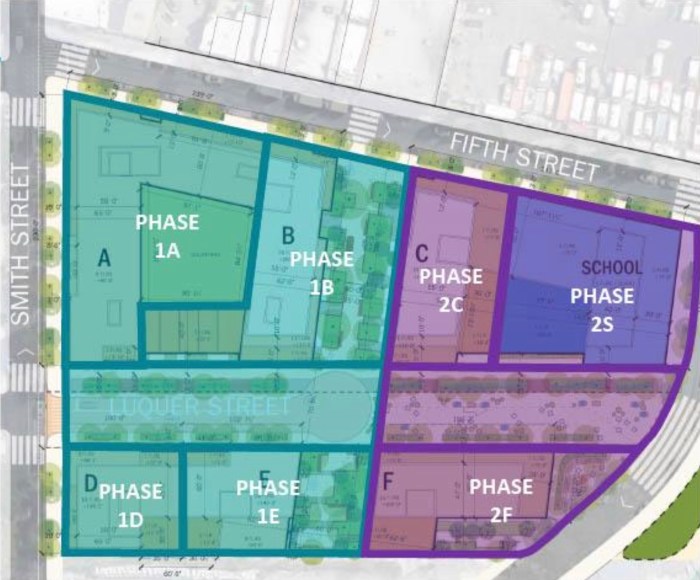
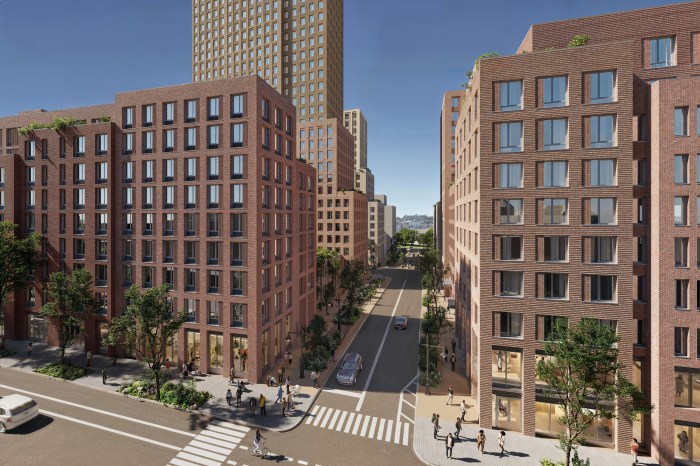
Saleh did not provide details on that timeline.
Foster was cautiously optimistic, and said at the March 28 meeting that “lots of things can be done quickly if people agree to do them and if they put resources toward them.” The remediation at Public Place hadn’t even started yet in 2019, he said, but was mostly done by 2021.
“We continue to work collaboratively with both agencies and look forward to a speedy resolution of this matter,” Young, National Grid’s representative, said in an email.
Update, 4/25/24, 5:39 p.m.: This story has been updated with comment and additional information from DEC.


